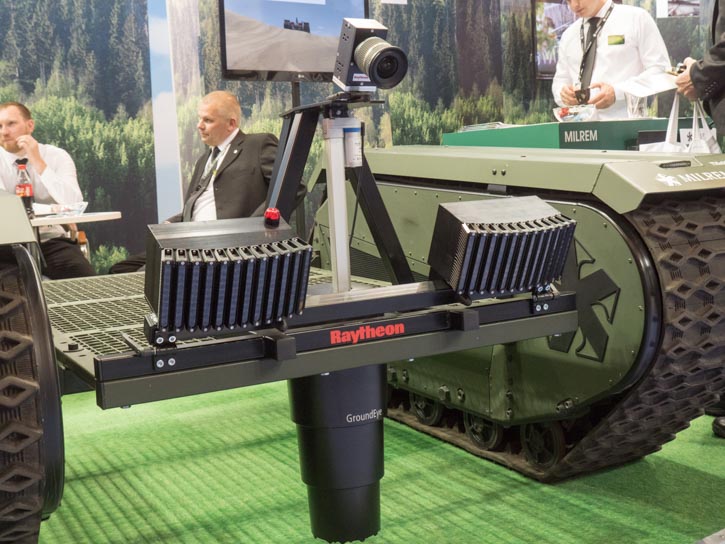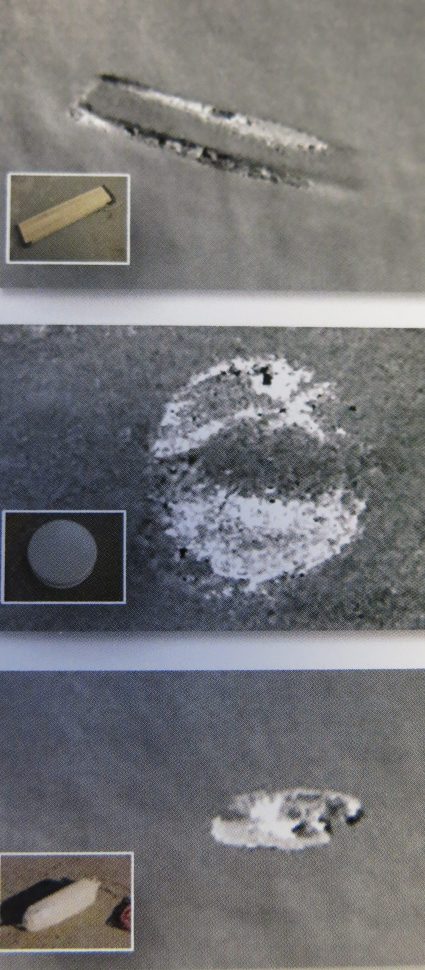Raytheon UK and Estonian UGV developer Milrem unveiled at Eurosatory 2016 an IED detection platform based on Raytheon’s GroundEye sensor system, integrated on the THeMIS Unmanned Ground Vehicle (UGV) developed by Milrem in Estonia.
GroundEye represents a new approach to IED detection, bringing the ability to confirm and diagnose buried threats. The sensor combines several sensing methods, covering a large field of view, to detect, confirm and diagnose the existence of a suspected IED over a large area. The GroundEye performs such mission using a compact, lightweight system, compared to existing Ground Penetration Radars (GPR) that require large antennae operating close to the surface. Each object detected is geotagged and marked for further action. As a modular sensor and open architecture, it can be integrated with existing sensors and concepts of operations (CONOPS), including GPR, Non-Linear Junction Detectors (NLJD) or command Wire detection systems, allowing gradual induction into existing, operational C-IED methodologies.
The sensor Provides a real-time imaging capability that can show the size, shape and orientation of explosive ordnance threats, including camouflaged or buried IED’s, without disturbing the ground. It is independent of any physical attributes of the emplaced device and is equally effective against targets that contain high, low or zero metal content.

THeMIS (Tracked Hybrid Modular Infantry System) is a modular, hybrid unmanned ground vehicle capable of carrying payloads of 750 kg. Carrying the GroundEye sensor, THeMIS assumes a C-IED (Counter Improvised Explosive Device) role.

An autonomous UGV such as THeMIS is an ideal vehicle for the deployment of GroundEye. According to THeMIS sources, the fuel and energy on board supports a C-IED mission of 10 hours. “GroundEye offers a solution to the confirm and diagnose capability gap experienced on explosive ordnance and IED clearance operations”, said Andy Gibson, head of Land Systems, Defense, Raytheon UK: “It is a significant step forward in manoeuvre support capability allowing for the maintenance of momentum and reducing unnecessary dismounted exposure. The system can be used in several forms and is platform agnostic.”. According to Gibson the integration onto Milrem’s UGV provides the opportunity to demonstrator this capability.
“Detecting and disarming IED’s is a natural role for unmanned vehicles. With its innovative modular and flexible approach, THeMis makes it possible to use the same UGV platform for multiple purposes,” explains Kuldar Väärsi, Milrem Chief Executive Officer.
Other military uses include as an armed tactical defense weapon, remote reconnaissance platform, MEDEVAC vehicle and supply delivery device. Milrem has successfully conducted initial running tests for the THeMIS prototype, and THeMIS will be ready for production by the end of this year.



















